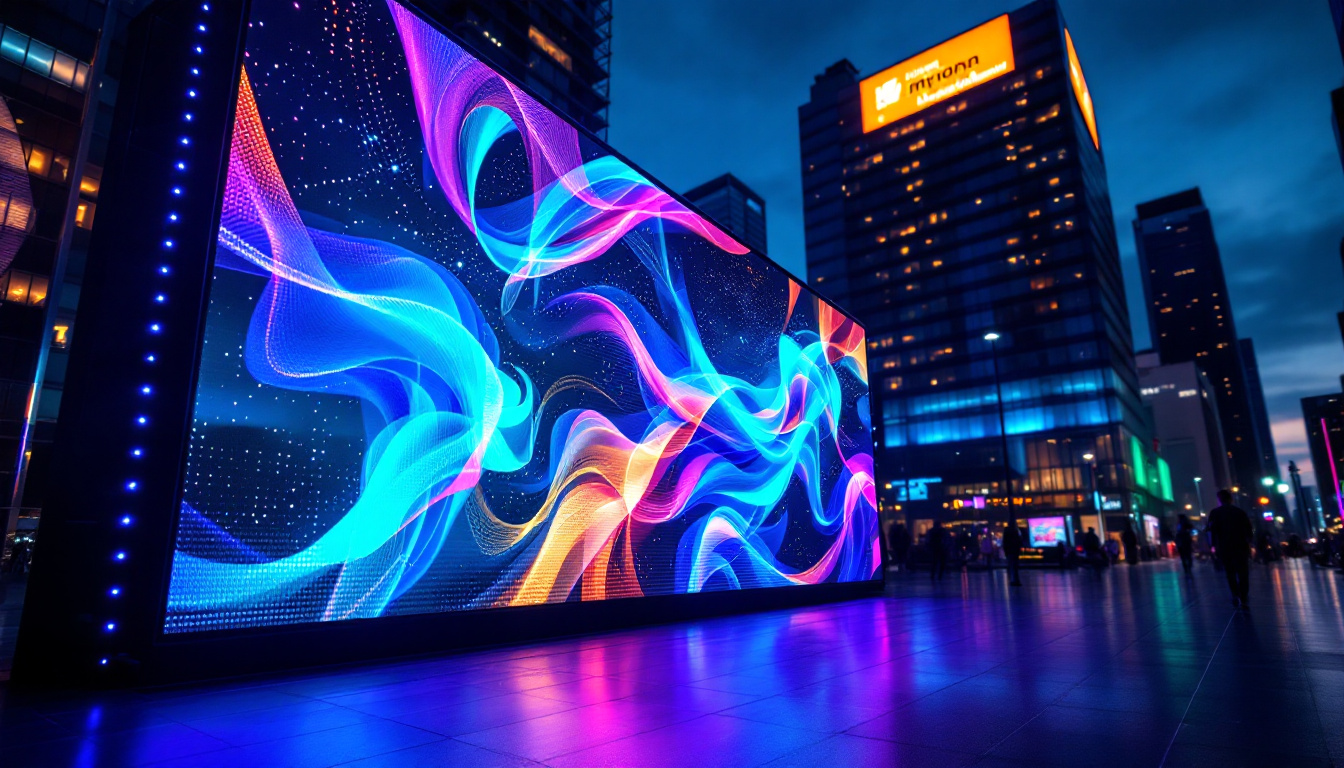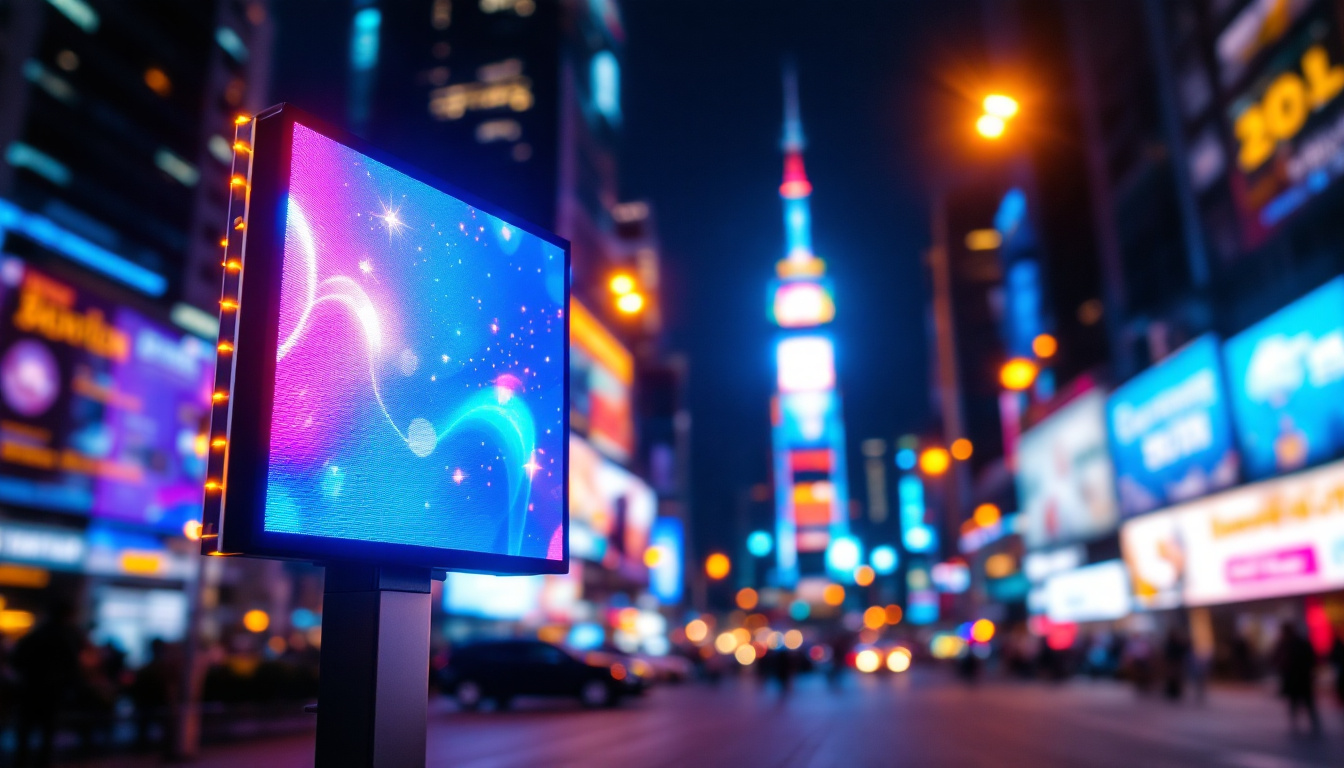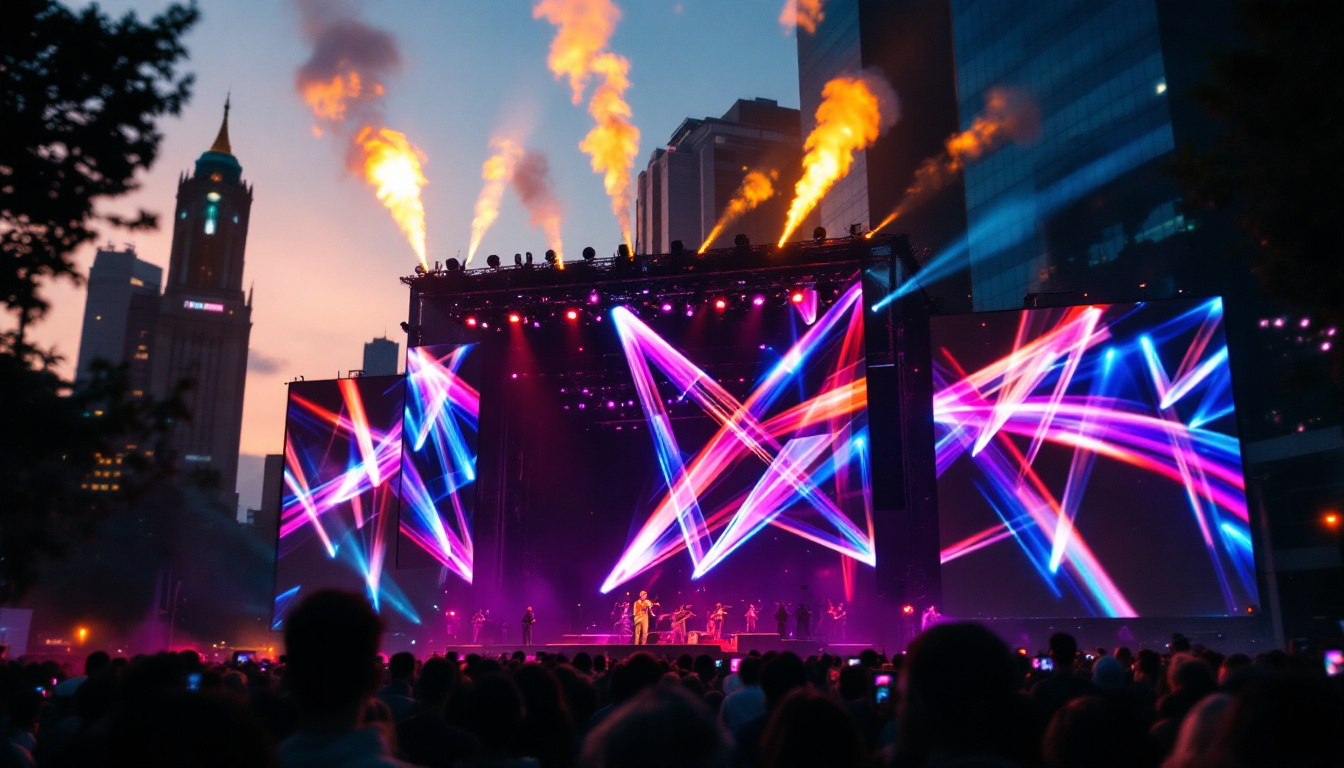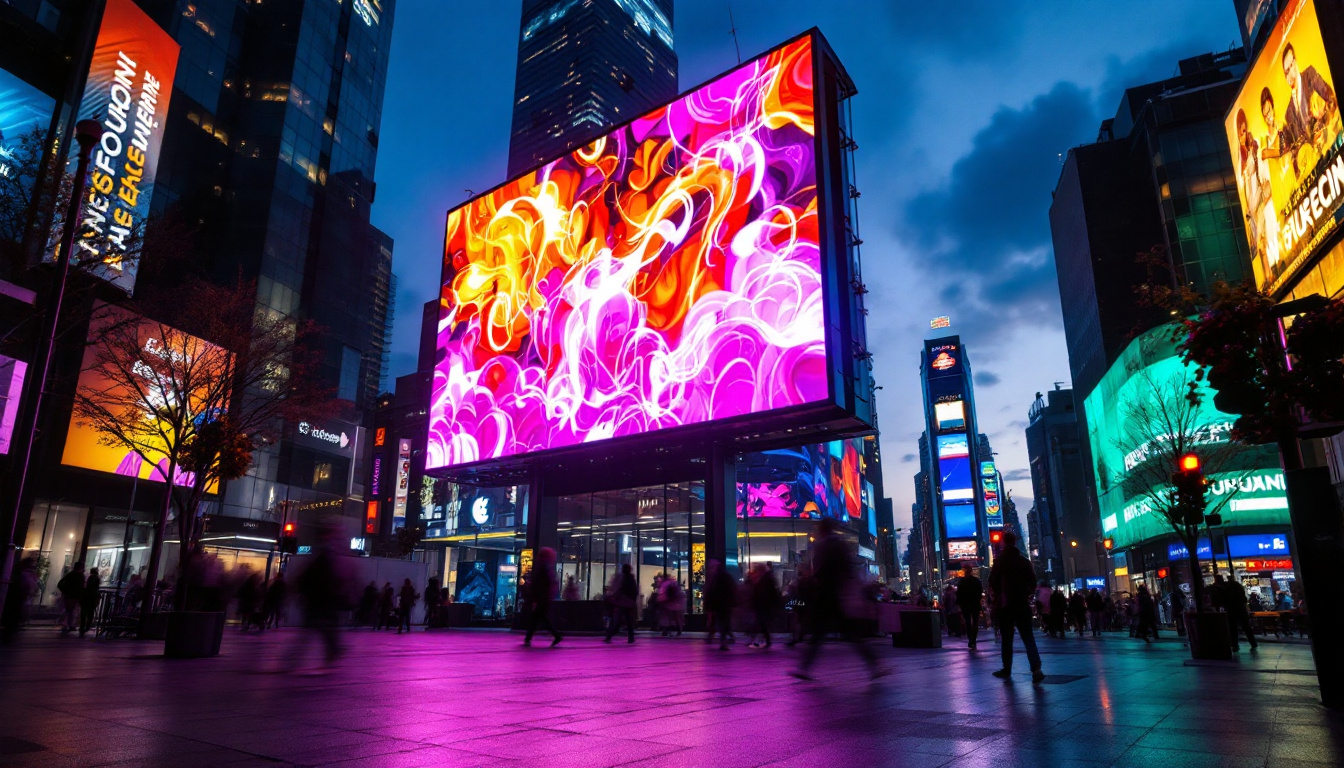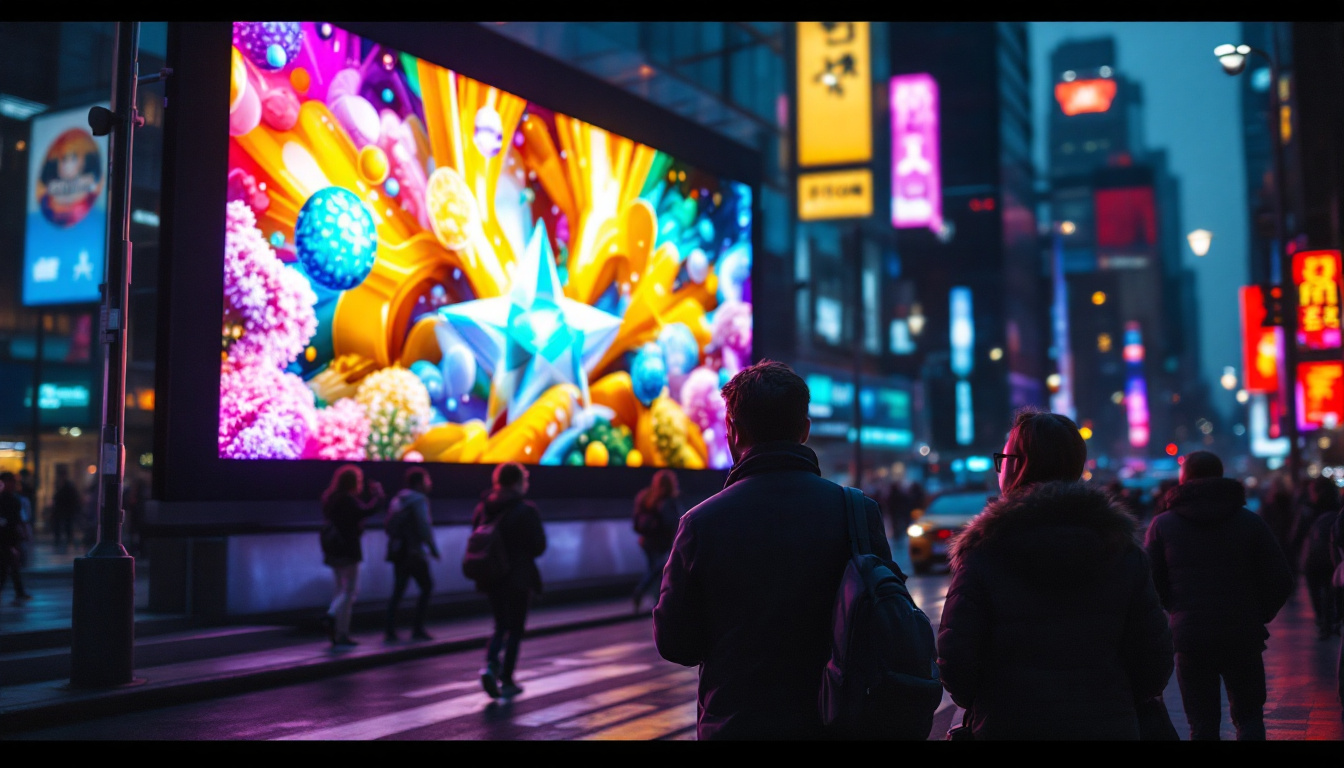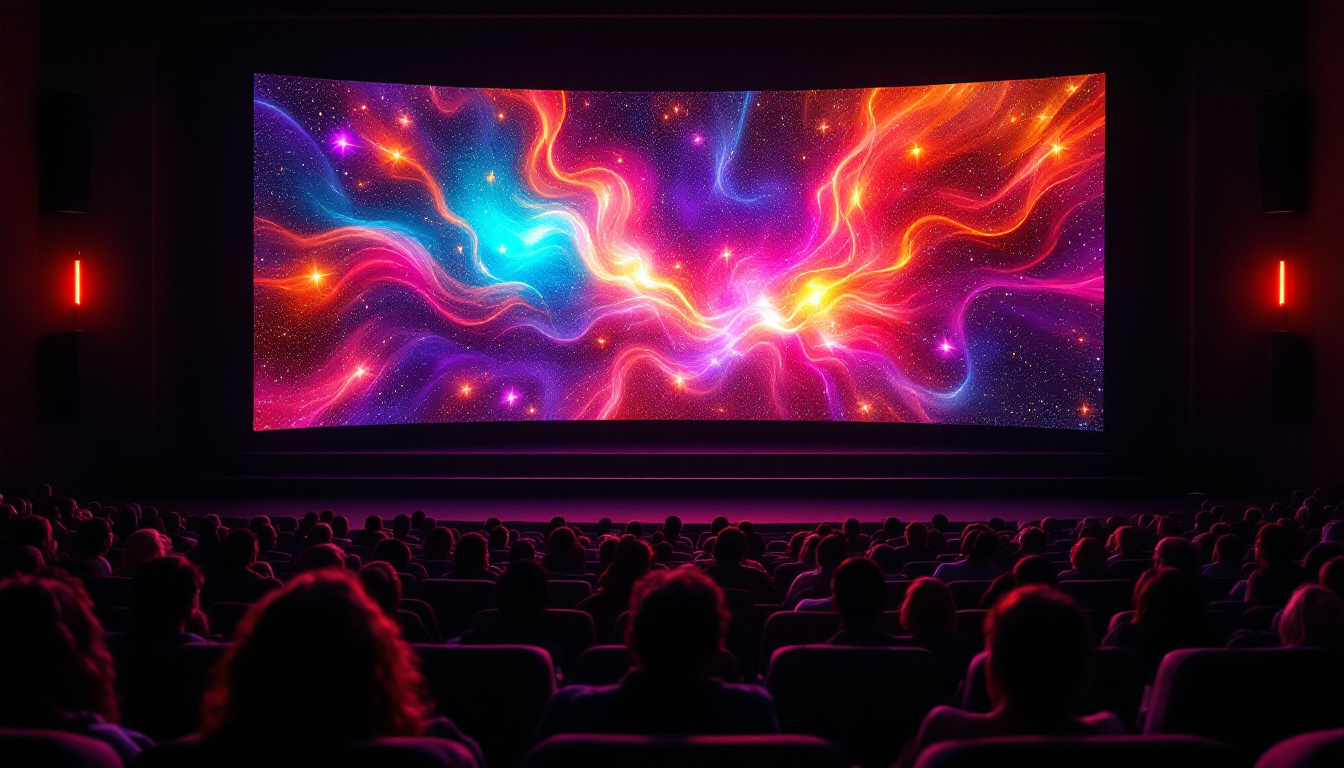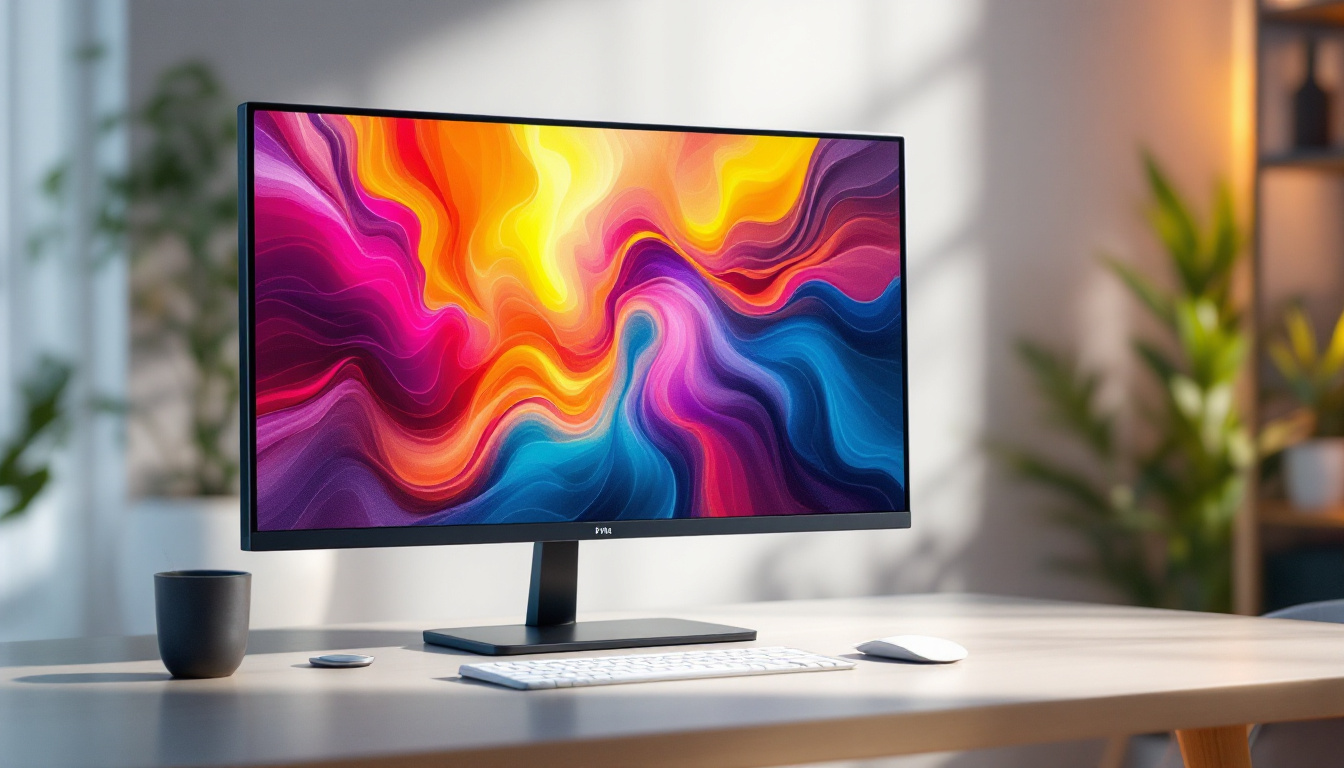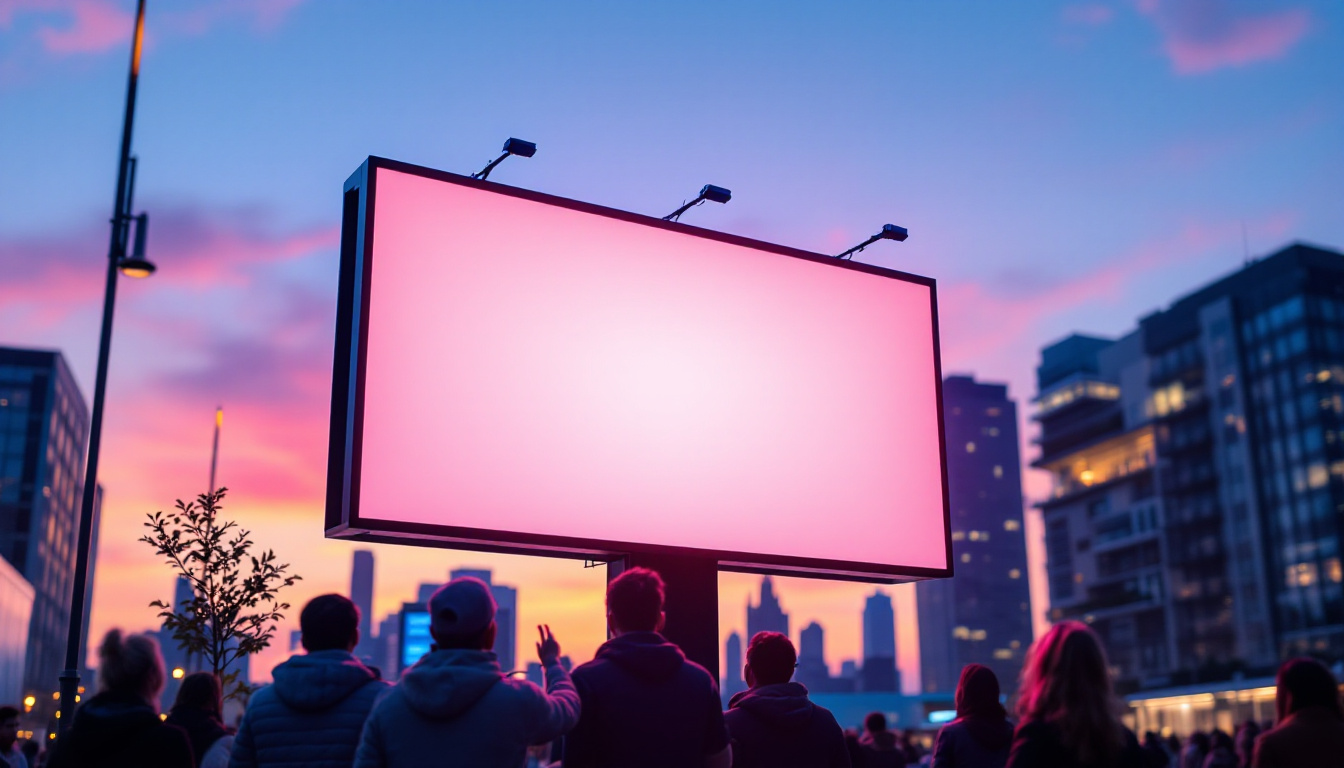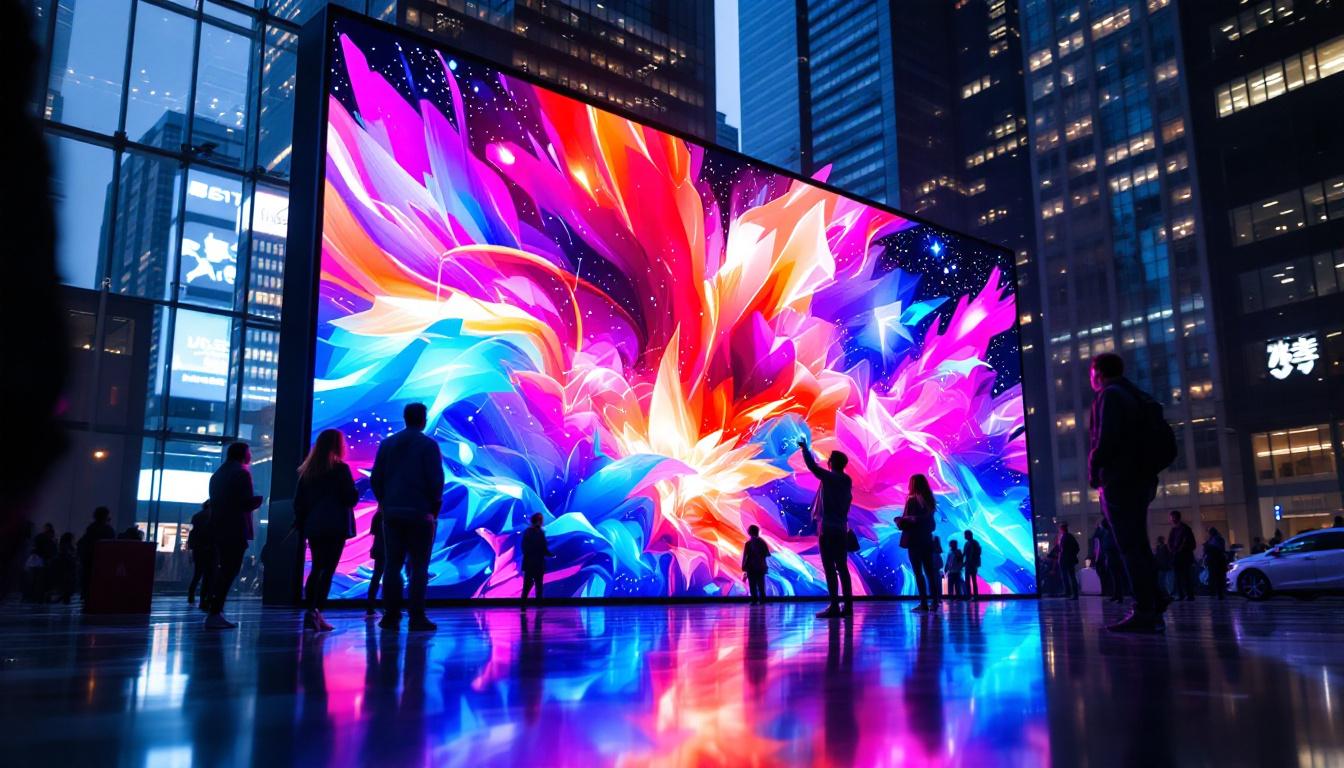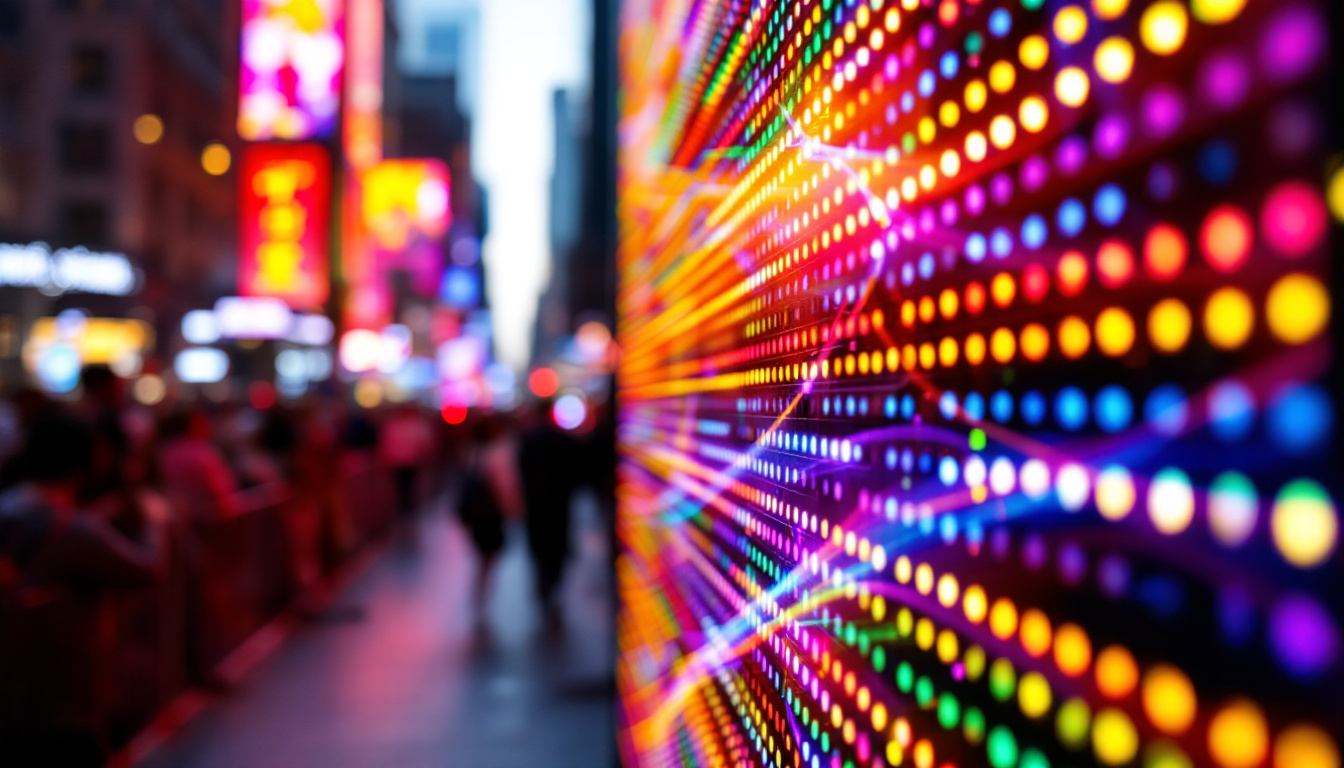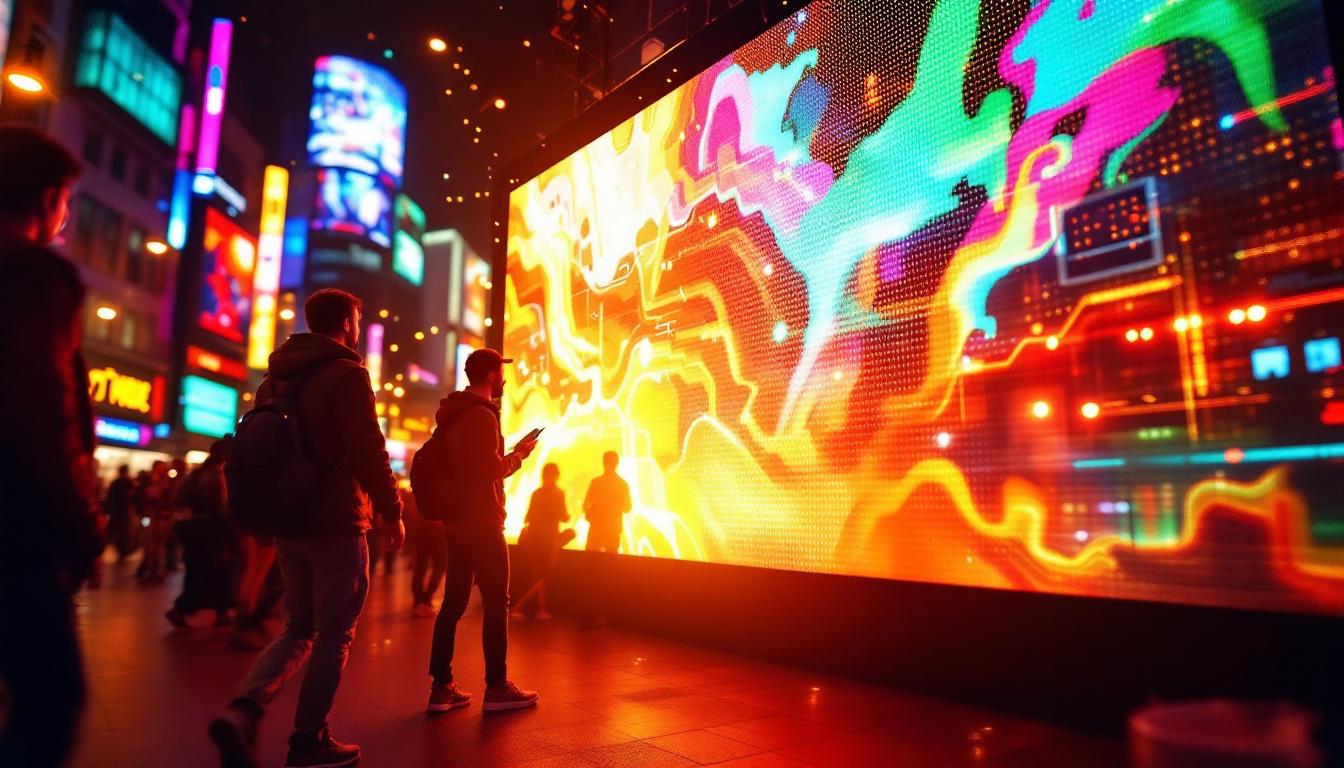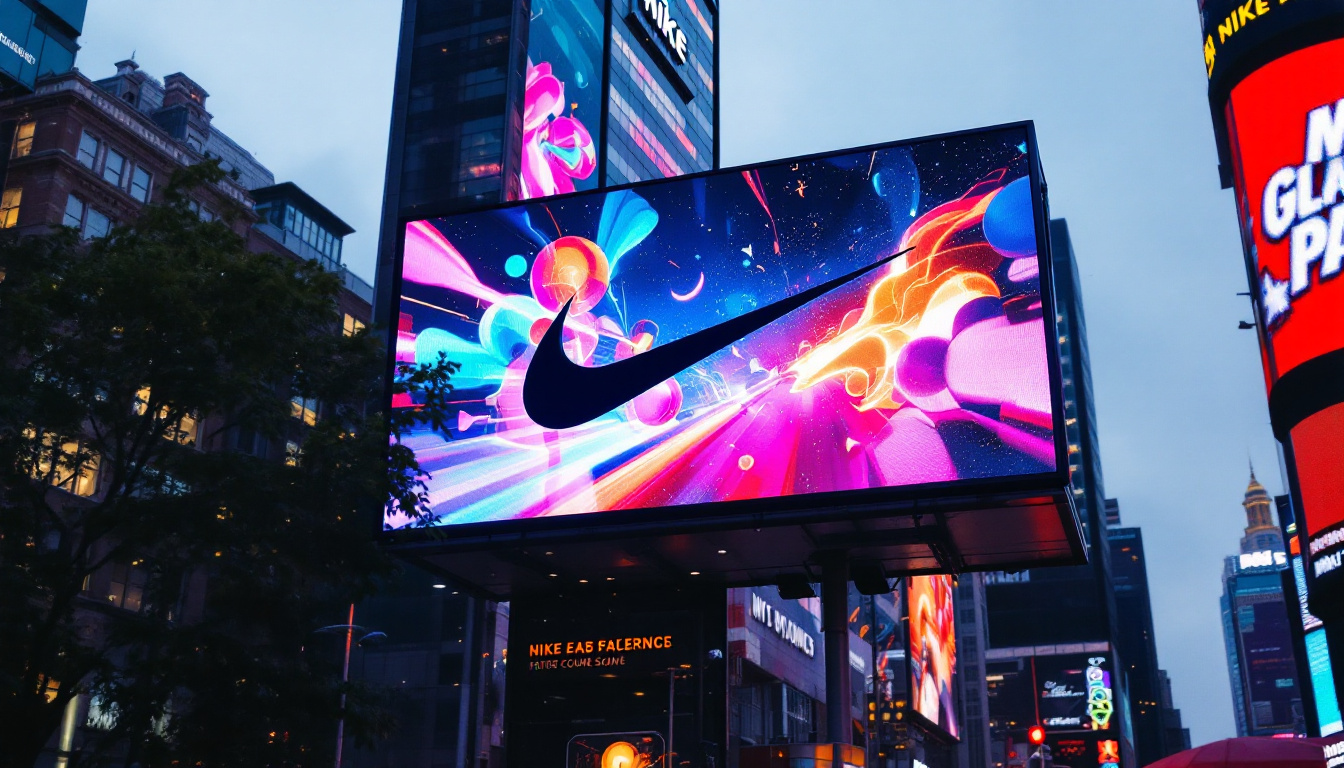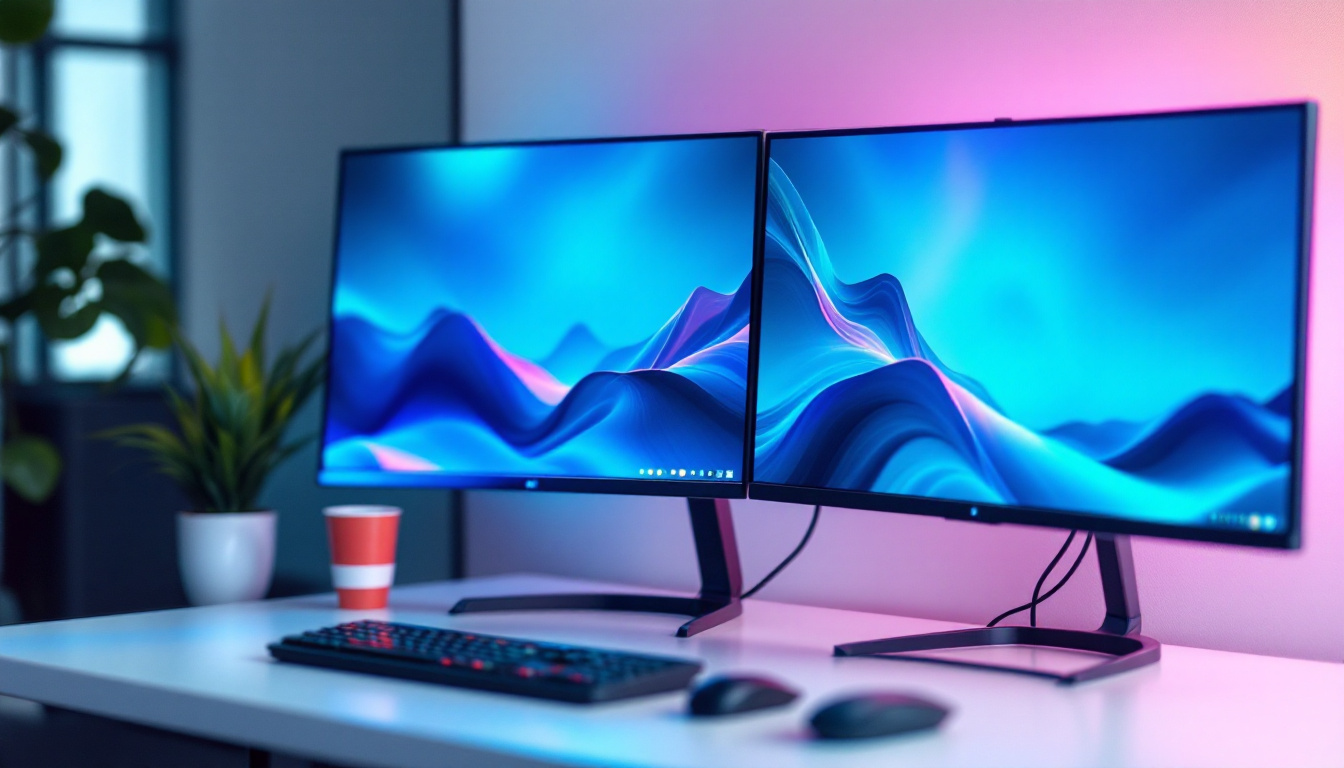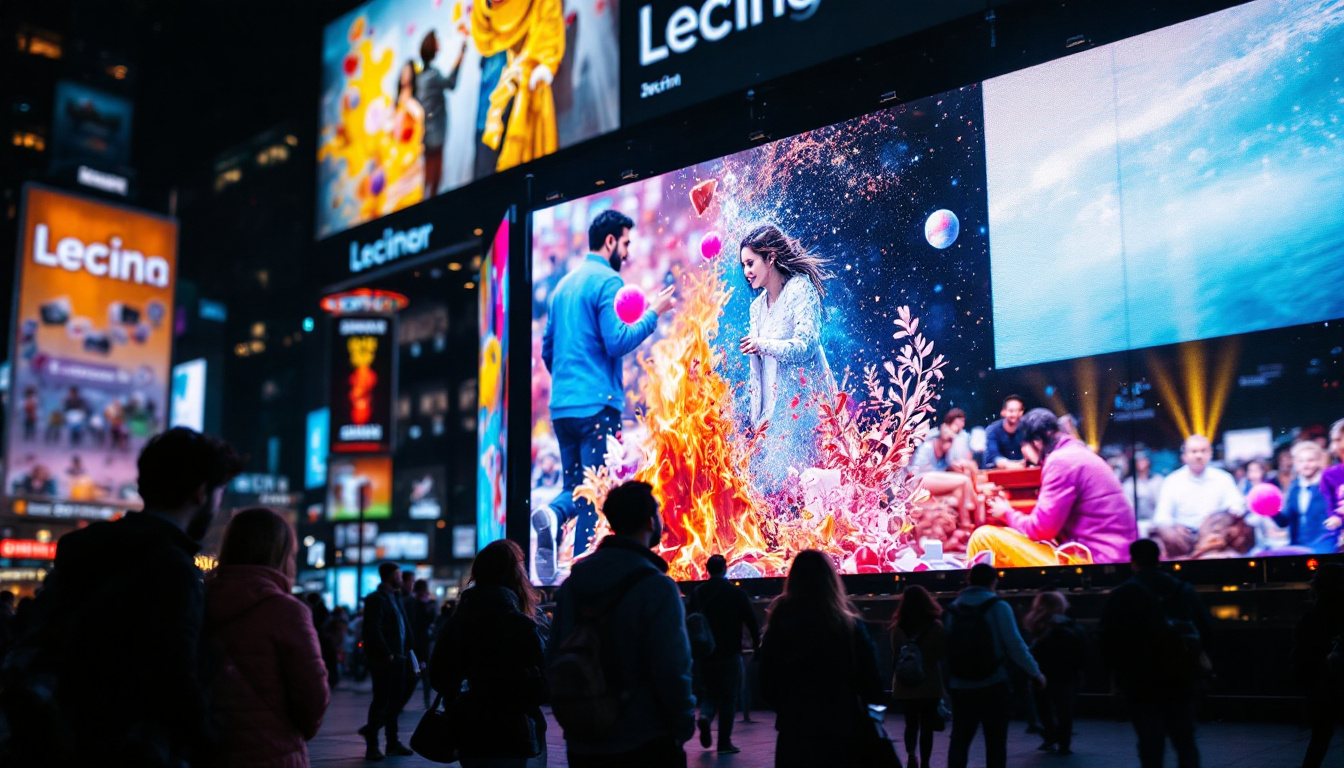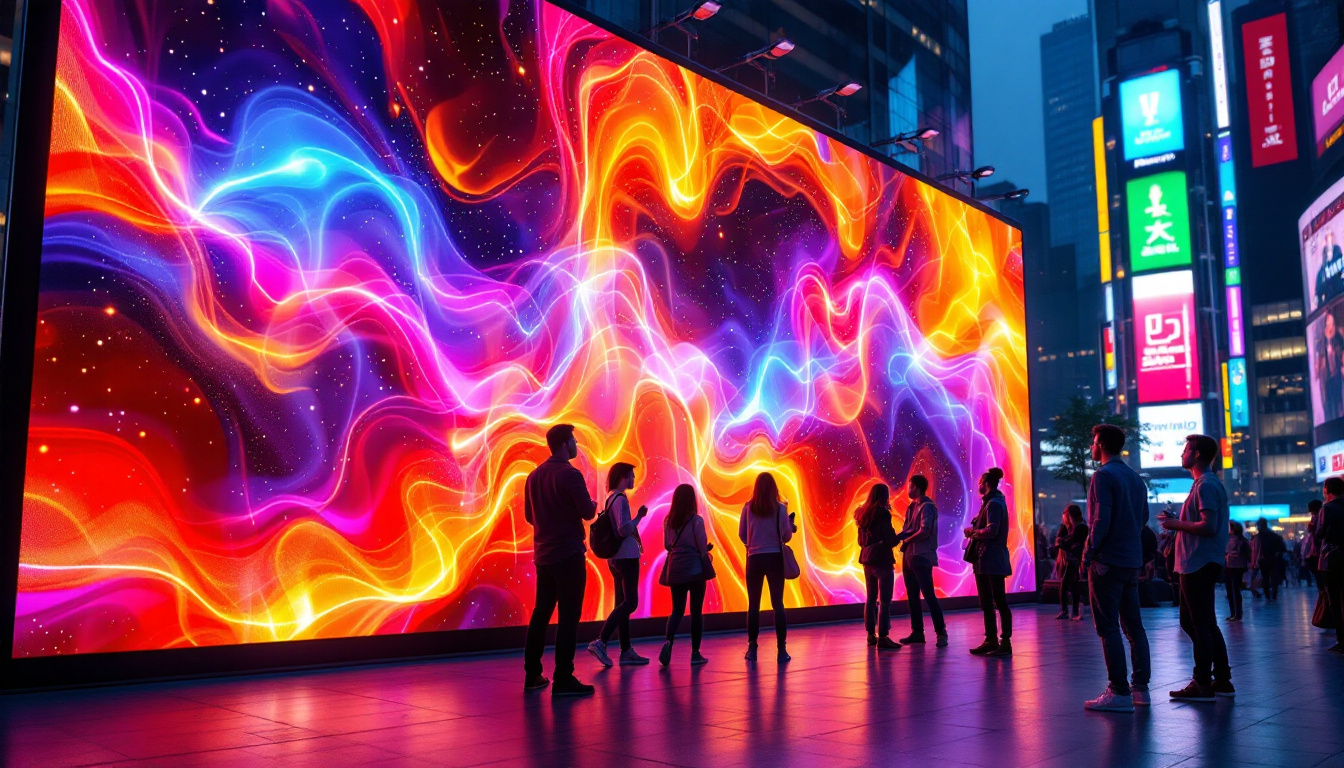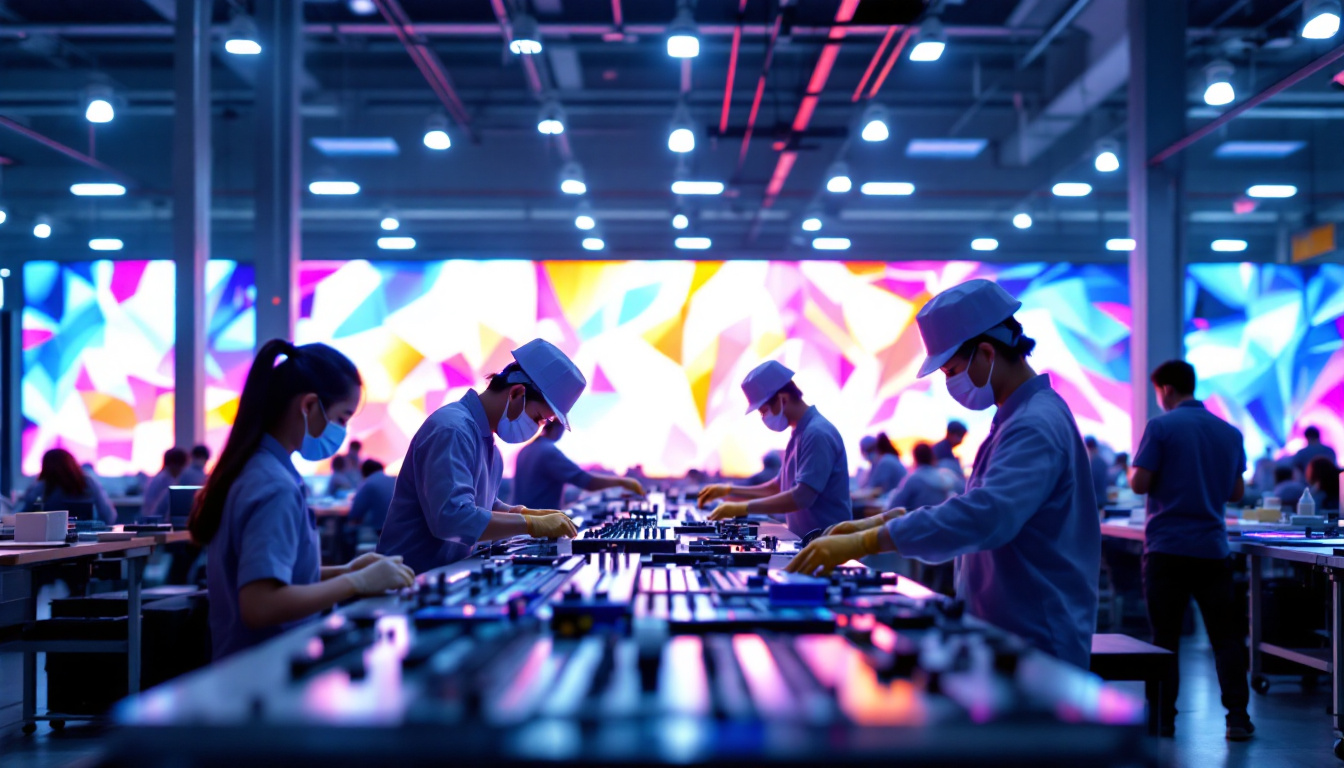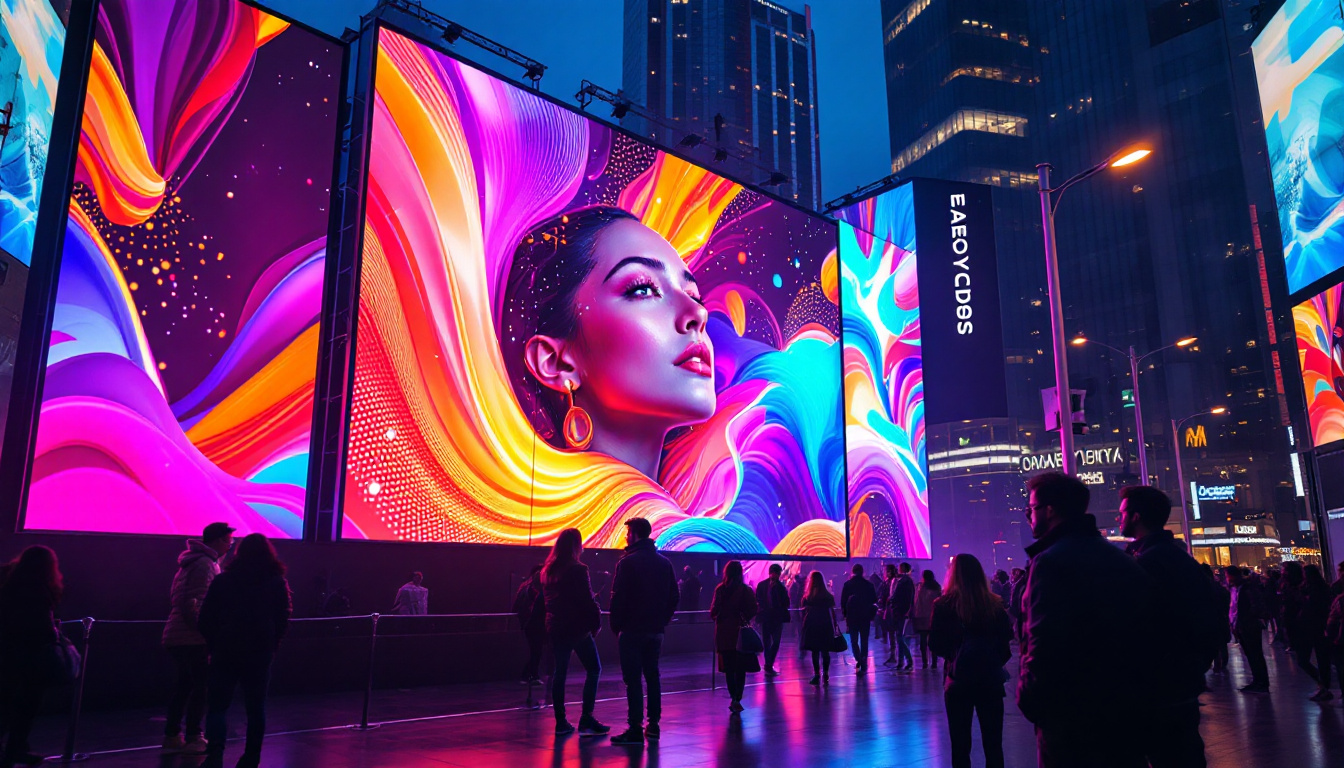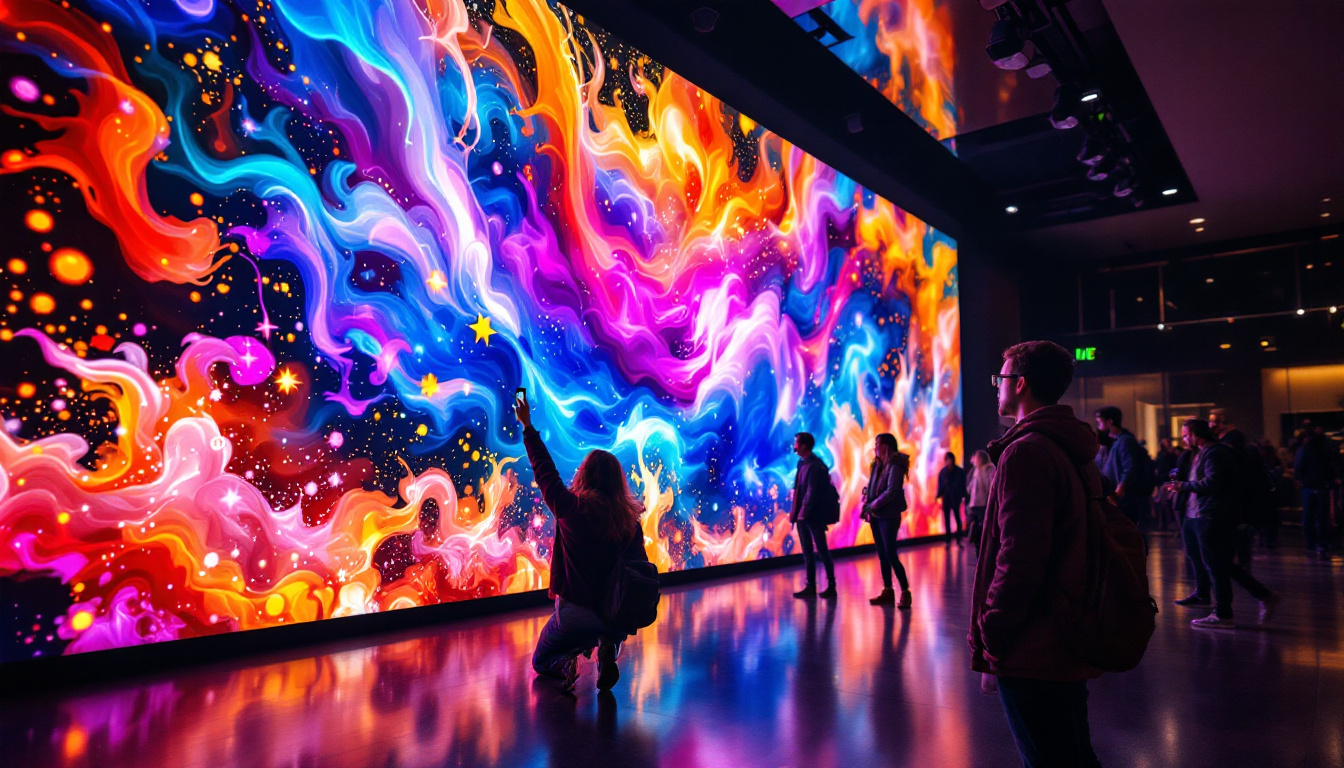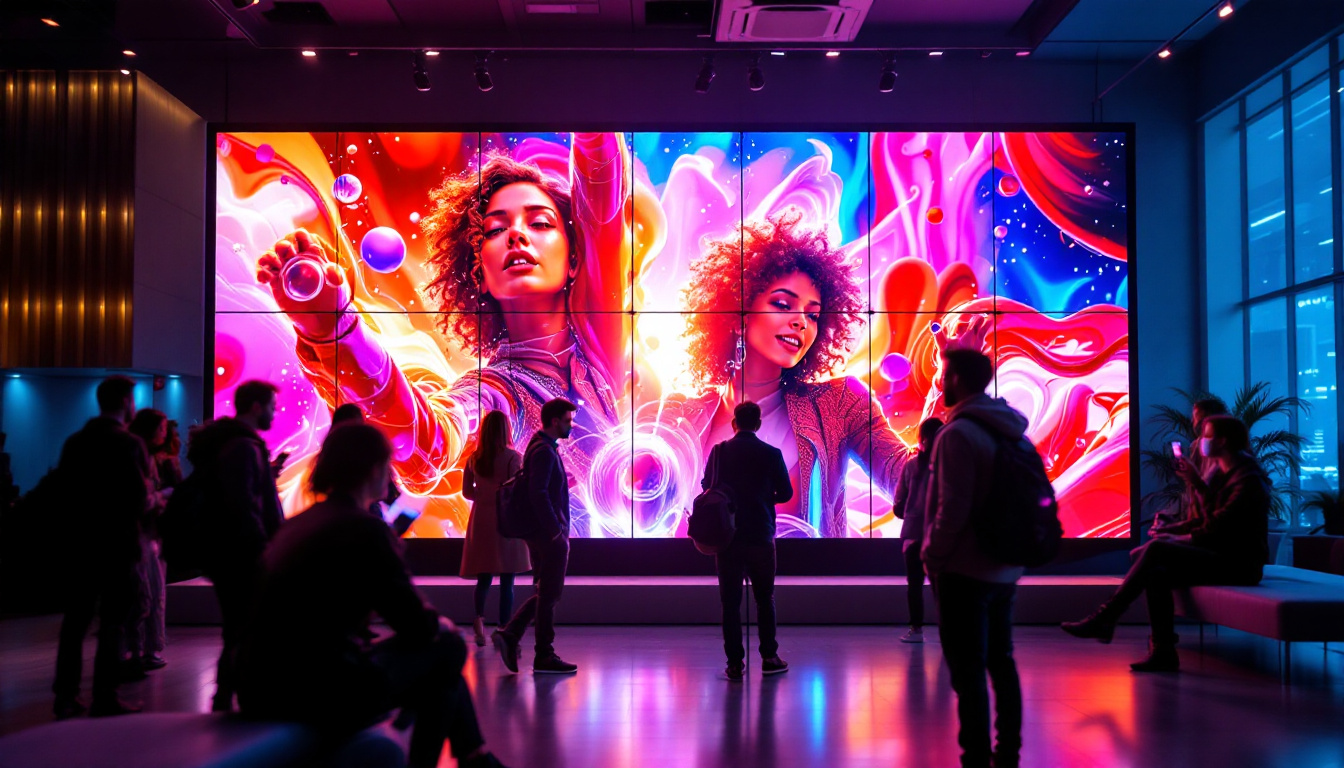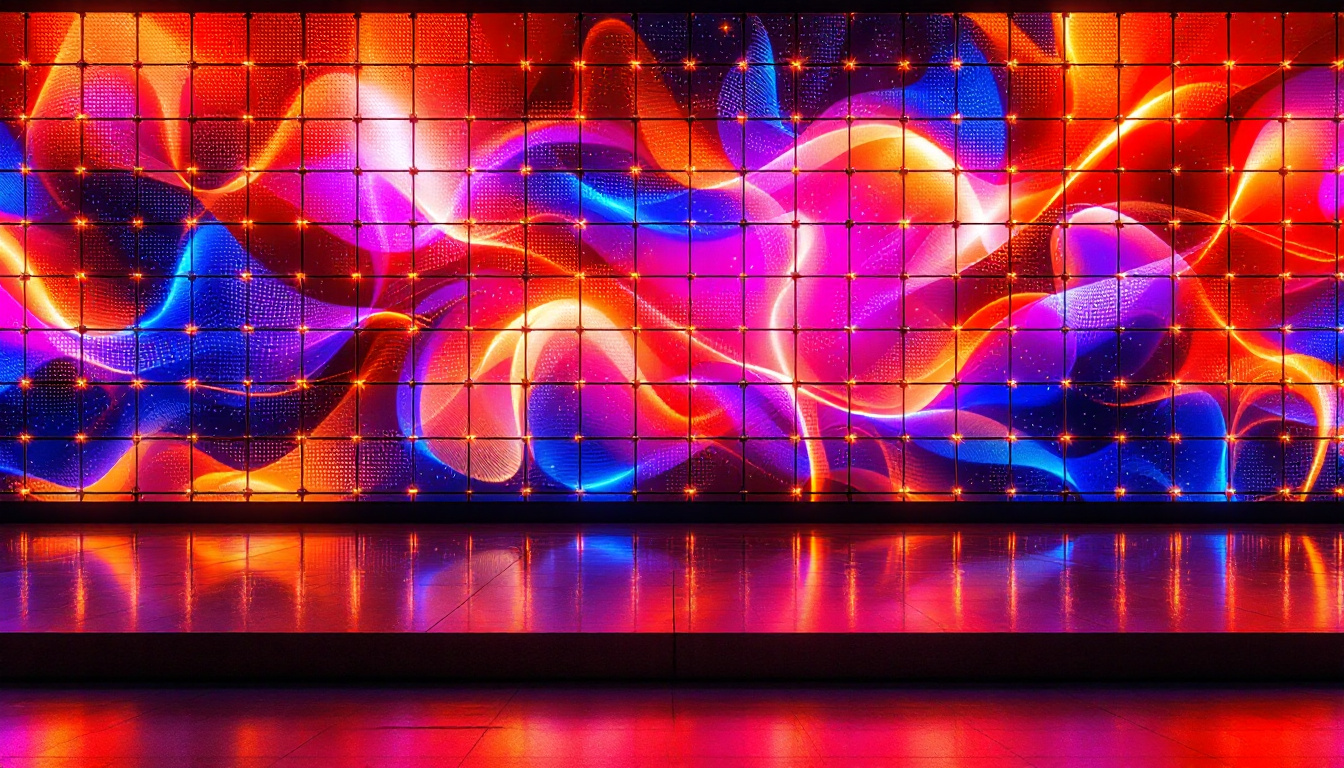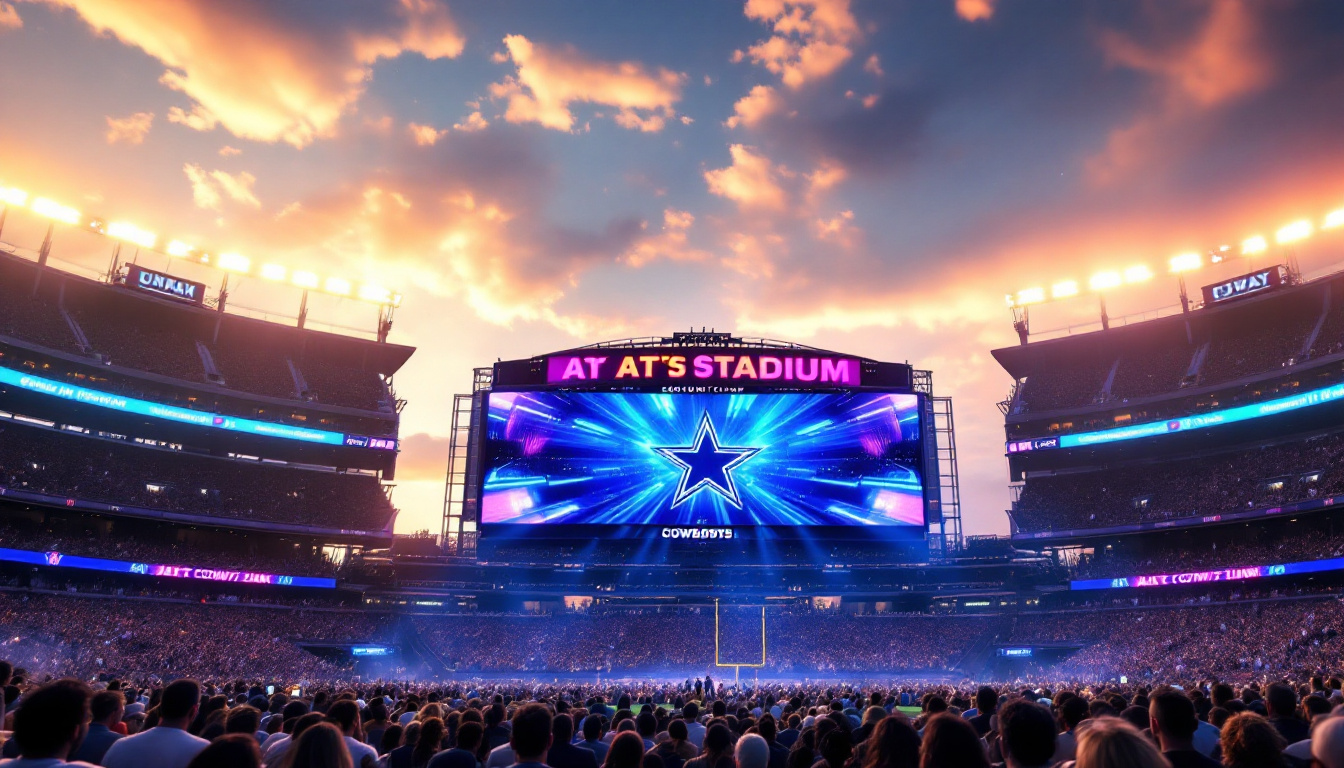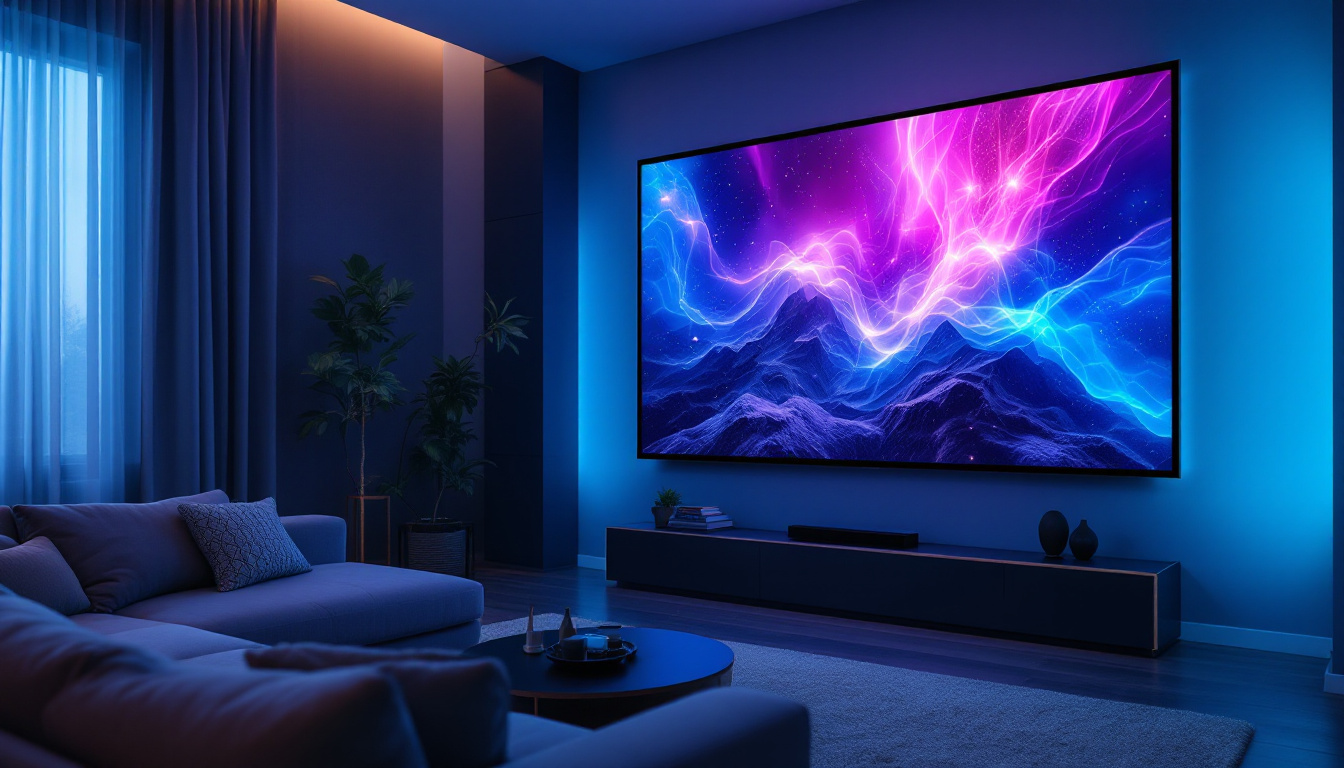In the modern world of visual technology, LED displays have become ubiquitous, transforming the way information is conveyed and entertainment is experienced. Among the various technical specifications that define the quality and effectiveness of these displays, pitch motion stands out as a crucial element. Understanding pitch motion is essential for anyone involved in the design, selection, or use of LED displays, whether for advertising, events, or personal use.
What is Pitch Motion?
Pitch motion refers to the distance between the individual LED pixels on a display, typically measured in millimeters. This measurement is critical because it directly influences the resolution and clarity of the images produced. A smaller pitch value indicates a higher pixel density, which results in sharper images, while a larger pitch can lead to a more pixelated appearance. The concept of pitch motion is not just a technical specification; it plays a vital role in the overall effectiveness of visual communication, especially in environments where detail and clarity are paramount.
Understanding Pixel Density
Pixel density is a key factor that affects the overall quality of an LED display. It is calculated by determining how many pixels are present in a given area, typically measured in pixels per square meter (px/m²). Higher pixel density means that more pixels are packed into the same area, which is particularly important for displays viewed up close, such as those used in retail environments or exhibitions. This density is crucial for applications like digital signage, where the ability to convey intricate details can significantly impact customer engagement and retention.
For instance, a display with a pitch of 2.5mm will have a significantly higher pixel density than one with a pitch of 10mm. This increased density allows for finer details and smoother gradients, making it ideal for applications where image quality is paramount. Additionally, advancements in LED technology have allowed manufacturers to create displays with even smaller pitch values, pushing the boundaries of what is possible in visual fidelity. As a result, industries ranging from advertising to art installations are increasingly investing in high-resolution displays to captivate their audiences.
Impact on Viewing Distance
The pitch of an LED display also affects the optimal viewing distance. Displays with smaller pitch values can be viewed from closer distances without noticeable pixelation, making them suitable for indoor environments where viewers are often near the screen. Conversely, displays with larger pitch values are better suited for outdoor or large venue applications, where viewers are typically farther away. This consideration is particularly important for event organizers who need to ensure that every attendee, regardless of their location in the venue, can enjoy a clear and immersive visual experience.
Understanding the relationship between pitch, pixel density, and viewing distance is essential for selecting the right display for a specific application. Choosing the appropriate pitch can enhance the viewer’s experience, ensuring that the content is both clear and engaging. Furthermore, as technology evolves, the trend toward ultra-high-definition displays continues to grow, prompting a shift in how designers and engineers approach display configurations. With the rise of virtual reality (VR) and augmented reality (AR), the demand for displays that can deliver exceptional detail at various viewing distances is more critical than ever, pushing the industry to innovate and adapt to new standards of visual excellence.
Types of LED Displays
LED displays come in various types, each designed for specific applications and environments. The choice of display type often depends on factors such as location, purpose, and budget. Here, we explore some of the most common types of LED displays and their characteristics.
Indoor LED Displays
Indoor LED displays are designed for use in environments such as shopping malls, conference rooms, and theaters. These displays typically feature smaller pitch values, allowing for high-resolution images that can be viewed from close distances. The brightness levels of indoor displays are also lower compared to outdoor models, as they are not exposed to direct sunlight.
Indoor displays are often used for advertising, presentations, and entertainment, providing vibrant colors and sharp images that capture the audience’s attention. Their versatility makes them a popular choice for various applications, from digital signage to live event production.
Outdoor LED Displays
Outdoor LED displays are built to withstand harsh weather conditions and are designed for high visibility in bright sunlight. These displays typically have larger pitch values, which allows for greater viewing distances. The pixel configuration is optimized for clarity at a distance, ensuring that the content remains legible even when viewed from afar.
Common applications for outdoor LED displays include billboards, stadium screens, and event signage. Due to their robust construction and high brightness levels, outdoor displays can effectively convey messages and advertisements, even in challenging lighting conditions.
Transparent LED Displays
Transparent LED displays are a relatively new innovation in the world of digital signage. These displays allow light to pass through, making them ideal for applications where visibility is essential, such as shop windows or architectural installations. The pitch of transparent displays can vary, but they often feature a unique design that maximizes both transparency and image quality.
These displays can create stunning visual effects, allowing brands to showcase their products while maintaining a level of transparency that keeps the space open and inviting. They are particularly popular in retail environments, where they can attract customers while displaying dynamic content.
Choosing the Right Pitch
Selecting the appropriate pitch for an LED display is a critical decision that can significantly impact the effectiveness of the display. Several factors should be considered when making this choice, including the intended application, viewing distance, and budget.
Application Considerations
The application of the LED display plays a significant role in determining the ideal pitch. For instance, displays used for close-up viewing, such as in retail environments or control rooms, should have a smaller pitch to ensure high image quality. On the other hand, displays intended for large venues or outdoor settings can utilize a larger pitch, as viewers will be positioned further away.
Additionally, the type of content being displayed is crucial. High-resolution images and videos may require a smaller pitch to maintain clarity, while simpler graphics and text can be effectively displayed on screens with a larger pitch.
Budget Constraints
Budget is another important factor when selecting an LED display. Generally, displays with smaller pitch values tend to be more expensive due to the increased pixel density and advanced technology required to produce high-quality images. However, investing in a higher-quality display can pay off in the long run by enhancing the viewer experience and improving engagement.
It is essential to balance the desired image quality with budget constraints. Evaluating the specific needs of the application and considering potential return on investment can help in making an informed decision.
Future Trends in LED Display Technology
The LED display industry is constantly evolving, with new technologies and trends emerging to enhance performance and user experience. As the demand for high-quality visual solutions continues to grow, several trends are shaping the future of LED displays.
Advancements in Pixel Technology
One of the most significant trends in LED display technology is the continuous advancement of pixel technology. Innovations in microLED and miniLED technologies are paving the way for even smaller pitch values, resulting in displays that offer unparalleled clarity and color accuracy. These advancements are particularly beneficial for applications that require high-resolution images, such as virtual reality and augmented reality experiences.
As these technologies mature, they are expected to become more accessible and cost-effective, allowing a broader range of applications to benefit from high-quality displays.
Integration with Smart Technology
Another notable trend is the integration of LED displays with smart technology. With the rise of the Internet of Things (IoT), LED displays are becoming increasingly connected, allowing for real-time content updates and interactive features. This integration enables businesses to engage with their audience in new and innovative ways, enhancing the overall viewing experience.
For instance, smart LED displays can be programmed to change content based on audience demographics, time of day, or even weather conditions, providing a dynamic and personalized experience for viewers.
Focus on Sustainability
As environmental concerns grow, the LED display industry is also shifting towards more sustainable practices. Manufacturers are exploring eco-friendly materials and energy-efficient technologies to reduce the environmental impact of their products. This focus on sustainability not only benefits the planet but also appeals to consumers who are increasingly conscious of their purchasing decisions.
By prioritizing sustainability, the LED display industry can contribute to a greener future while continuing to innovate and improve the quality of visual technology.
Conclusion
Pitch motion is a fundamental aspect of LED displays that significantly influences their performance and effectiveness. By understanding the relationship between pitch, pixel density, and viewing distance, businesses and individuals can make informed decisions when selecting displays for various applications.
As technology continues to advance, the future of LED displays looks promising, with innovations in pixel technology, smart integration, and sustainability paving the way for even more engaging and high-quality visual experiences. Whether for advertising, entertainment, or personal use, the right LED display can make a lasting impact, capturing attention and conveying messages with clarity and vibrancy.
In summary, the world of LED displays is dynamic and ever-evolving, and staying informed about pitch motion and other key specifications will ensure that users can fully leverage the potential of this powerful technology.
Discover LumenMatrix’s Advanced LED Solutions
Ready to elevate your visual experience with the latest in LED display technology? LumenMatrix is at the forefront of innovation, offering a wide range of LED display solutions tailored to your needs. From captivating Indoor LED Wall Displays to dynamic Outdoor LED Wall Displays, and from versatile Vehicle LED Displays to stunning LED Transparent Displays, our mission is to transform your visual communication. Enhance your brand visibility and engage your audience like never before. Check out LumenMatrix LED Display Solutions today and step into the future of digital signage.

